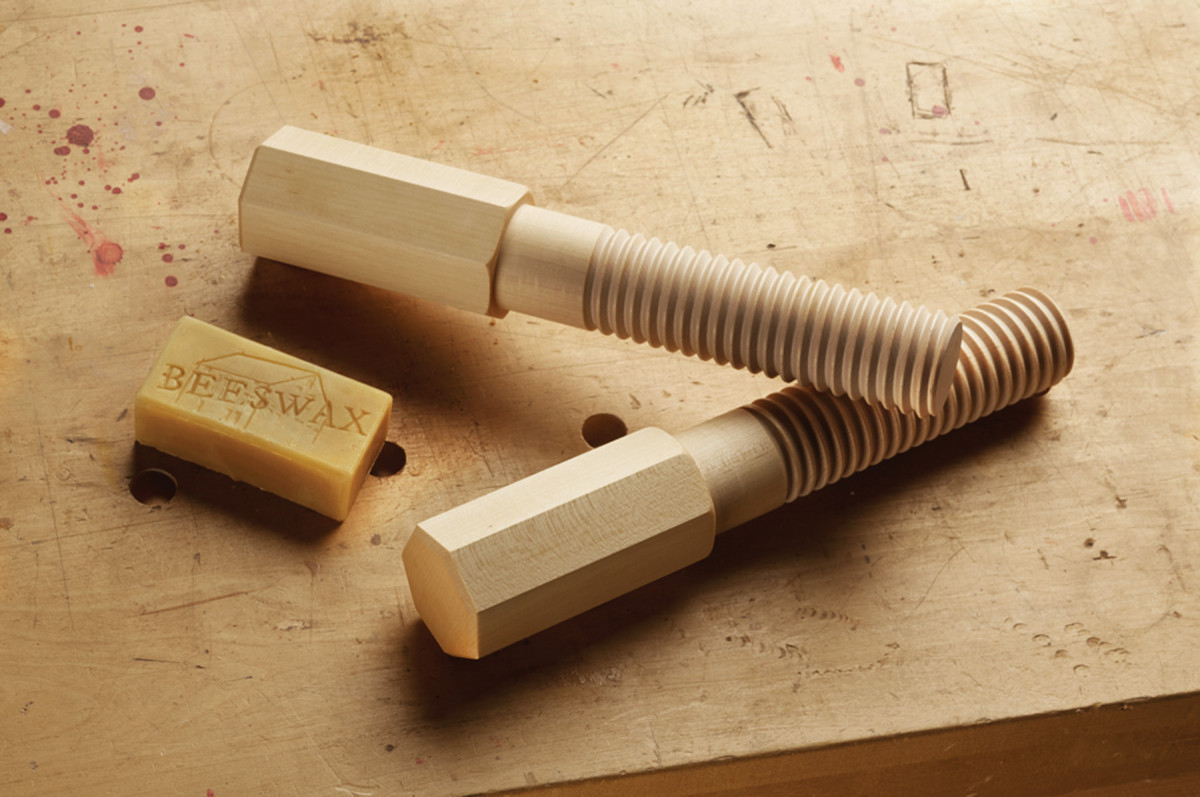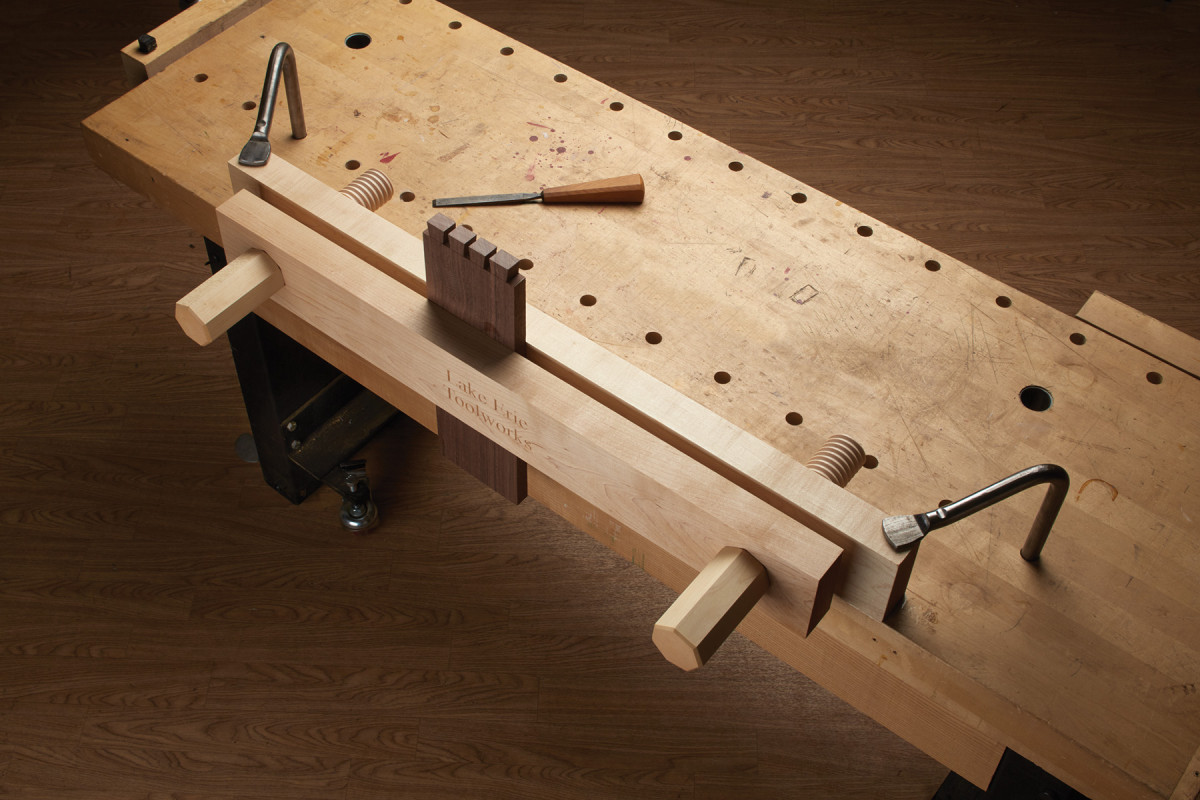We may receive a commission when you use our affiliate links. However, this does not impact our recommendations.
This well-machined workholding device is easy to assemble and is solid.
Tool: Moxon Vise Kit Shop Now
Manufacturer: Lake Erie Toolworks
MSRP: $209
Sure, you can make your own double twin-screw vise, but you don’t have to – there are several excellent commercial options, like this Lake Erie Toolworks Moxon Vise kit.
This hard maple vise arrives nicely packaged in four easy-to-put-together pieces; directions are included, but you likely won’t need them.
But before you assemble it (which takes less than a minute), you might wish to sand the chops (they come nicely machine-surfaced), then add an oil finish to the chops and screw handles. The handles come sanded to #120 grit, which the maker, Nick Dombrowski, notes provides a good grip – so no need to sand those. I applied two coats of my go-to wipe-on shop-projects finish: equal parts varnish, boiled linseed oil and mineral spirits. Also, rub some paste wax or beeswax on the screws and in the threads in the rear chop – both to make the screws turn more easily, and to keep them from squeaking. (I don’t know about you, but, for me, the wood-on-wood squeak is akin to nails on a chalkboard.)

Holds fast. This solid, well-machined Moxon vise from Lake Erie Toolworks comes ready to assemble and use, except for finish (if desired) and wax on the screw threads.
The crisply threaded 1 3⁄4“-diameter wooden screws are 12″ long overall, with a 7”-long, 3 1⁄2 threads-per-inch threaded section and comfortably chamfered heptagonal handle.
Both chops are 13⁄4” thick. The tapped rear chop is 26″ long x 37⁄8” wide, while the front chop is 32″ long x 4″ wide. That extra 1⁄8” allows the front to overhang just enough to catch the front edge of the bench for easy alignment before clamping the vise to your bench for use (or for cinching it down with holdfasts, which is my preferred attachment method). Plus, the clearance holes for the screws are slightly oblong, which allows you to clamp tapered work.
In between the screws, you can fit a workpiece up to 24″ wide – that’s plenty of capacity for most of the casework I do. And from front to back in between the chops, the usable capacity is about 41⁄4” – that’s far more than I’ve ever required.
The jaws grip the workpiece tightly; I experienced no slippage while sawing dovetails (my typical use for this style of vise).
These wooden screws are perfectly machined (no surprise to anyone who’s used the company’s bench screws), which makes it easy to move the front jaw in and out to clamp the work. Do they turn as easily as the Benchcrafted screws and hand wheels that quickly spin the jaw in and out? Nope – but you wouldn’t expect them to. This Lake Erie vise presents a more traditional look and feel. And I doubt you’ll find a better-made all-wood version.
Here are some supplies and tools we find essential in our everyday work around the shop. We may receive a commission from sales referred by our links; however, we have carefully selected these products for their usefulness and quality.









